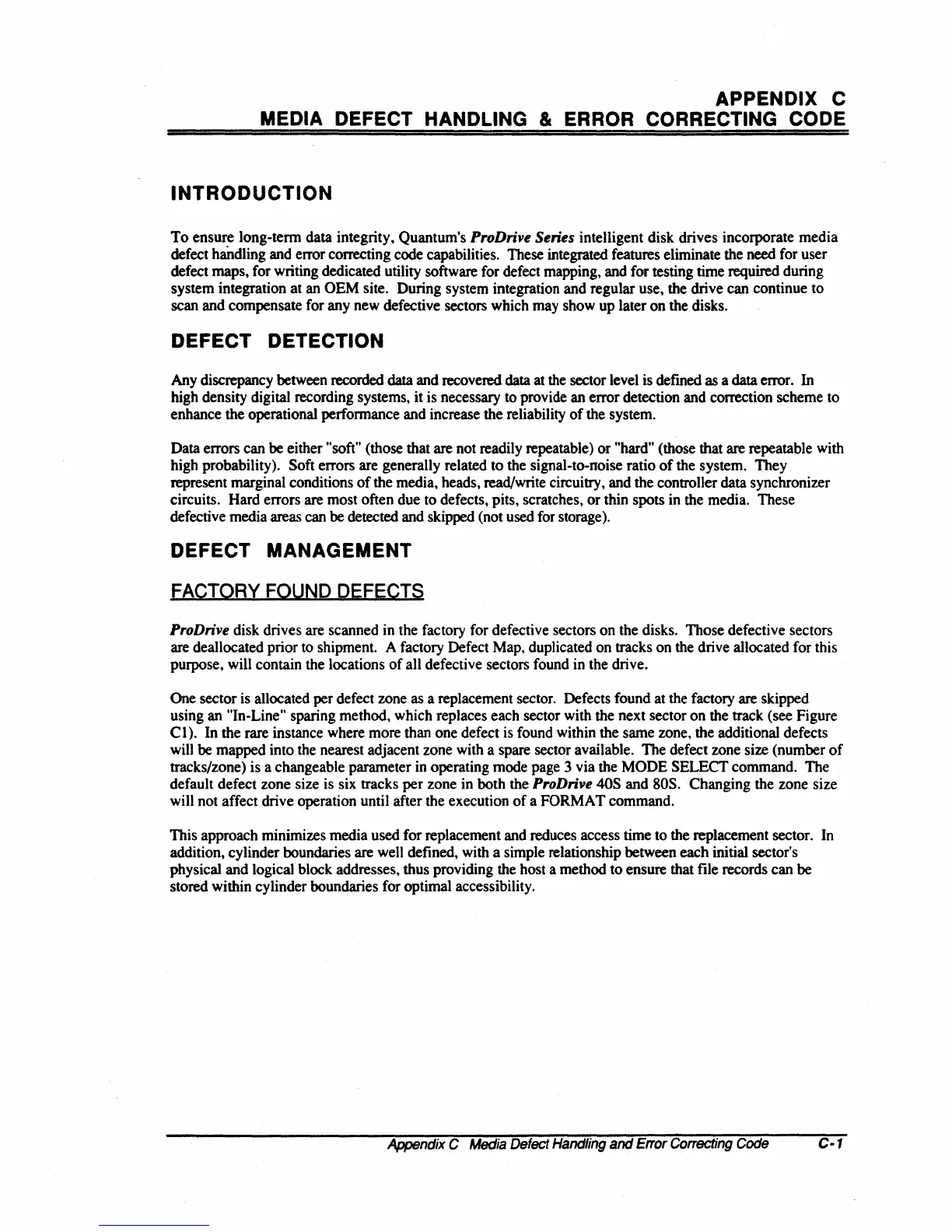APPENDIX C
MEDIA DEFECT HANDLING & ERROR CORRECTING CODE
INTRODUCTION
To ensure long-term data integrity, Quantum's ProDrive Series intelligent disk drives incorporate media
defect
handling
and
error correcting code capabilities. These integrated features eliminate
the
need
for
user
defect maps, for writing dedicated utility software for defect mapping,
and
for testing time required during
system integration at
an
OEM
site. During system integration and regular use, the drive can continue
to
scan and compensate for any
new
defective sectors which
may
show
up
later on the disks.
DEFECT DETECTION
Any
discrepancy between recorded
data
and
recovered data
at
the
sector
level
is
defined as a data error. In
high
density digital recording systems, it
is
necessary
to
provide
an
error detection
and
correction scheme
to
enhance the operational performance and increase the reliability of the system.
Data errors can
be
either "soft" (those that are not readily repeatable) or "hard" (those that
are
repeatable
with
high probability). Soft errors
are
generally related to
the
signal-to-noise ratio
of
the system. They
represent marginal conditions of the media, heads, read/write circuitry, and
the
controller data synchronizer
circuits. Hard errors are most often due
to
defects, pits, scratches, or thin spots
in
the
media. These
defective media areas
can
be
detected
and
skipped (not
used
for
storage).
DEFECT MANAGEMENT
FACTORY FOUND DEFECTS
ProDrive disk drives
are
scanned
in
the factory for defective sectors
on
the disks. Those defective sectors
are
deallocated prior
to
shipment. A factory Defect
Map,
duplicated
on
tracks
on
the
drive allocated for this
purpose, will contain the locations of all defective sectors found
in
the drive.
One sector
is
allocated per defect
zone
as
a replacement sector. Defects found
at
the
factory
are
skipped
using
an
"In-Line" sparing method, which replaces each sector with the next sector on
the
track (see Figure
Cl). In the rare instance where more than
one
defect
is
found
within the same zone, the additional defects
will
be
mapped into
the
nearest adjacent zone
with
a spare sector available. The defect zone size (number
of
tracks/zone)
is
a changeable parameter
in
operating mode page 3 via
the
MODE SELECT command. The
default defect zone size
is
six
tracks per zone
in
both the ProDrive 40S and 80S. Changing the zone size
will not affect drive operation until after the execution of a FORMAT command.
This approach minimizes media used for replacement and reduces access time
to
the replacement sector.
In
addition, cylinder boundaries are
well
defined,
with
a simple relationship between each initial sector's
physical and logical block addresses, thus providing
the
host a method to ensure that file records can be
stored within cylinder boundaries for optimal accessibility.
Appendix C Media Defect Handling and Error Correcting Code C-1

